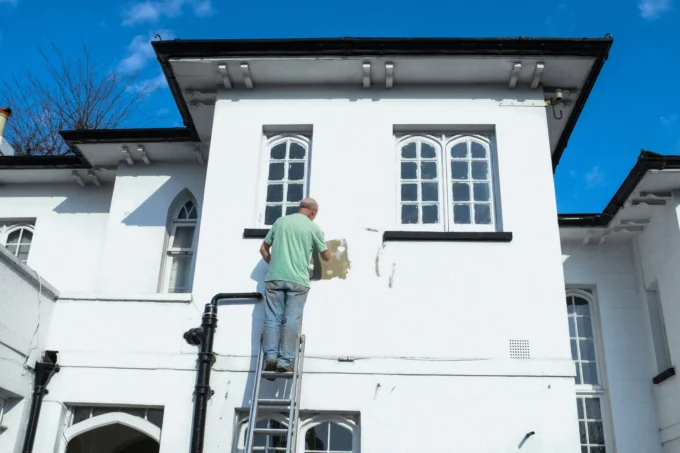- Home
- Articles
- Architectural Portfolio
- Architectral Presentation
- Inspirational Stories
- Architecture News
- Visualization
- BIM Industry
- Facade Design
- Parametric Design
- Career
- Landscape Architecture
- Construction
- Artificial Intelligence
- Sketching
- Design Softwares
- Diagrams
- Writing
- Architectural Tips
- Sustainability
- Courses
- Concept
- Technology
- History & Heritage
- Future of Architecture
- Guides & How-To
- Art & Culture
- Projects
- Interior Design
- Competitions
- Jobs
- Store
- Tools
- More
- Home
- Articles
- Architectural Portfolio
- Architectral Presentation
- Inspirational Stories
- Architecture News
- Visualization
- BIM Industry
- Facade Design
- Parametric Design
- Career
- Landscape Architecture
- Construction
- Artificial Intelligence
- Sketching
- Design Softwares
- Diagrams
- Writing
- Architectural Tips
- Sustainability
- Courses
- Concept
- Technology
- History & Heritage
- Future of Architecture
- Guides & How-To
- Art & Culture
- Projects
- Interior Design
- Competitions
- Jobs
- Store
- Tools
- More
The Key to Energy Savings: Optimizing Your Attic for Efficiency

When it comes to improving your home’s energy efficiency, your attic often holds the key to significant savings. A poorly insulated or improperly ventilated attic can lead to heat loss in the winter, overheating in the summer, and increased energy bills year-round. By optimizing your attic for efficiency, you can enhance comfort, reduce costs, and make your home more environmentally friendly. This guide explores how an energy-efficient attic contributes to lower energy consumption and provides actionable steps to transform this often-overlooked space into a powerhouse of savings.
Table of Contents
ToggleInsulating Your Attic for Maximum Savings
Proper insulation is the cornerstone of an energy-efficient attic. It acts as a barrier, preventing heat from escaping during the winter and keeping your home cool during the summer. Without adequate insulation, you may find yourself constantly adjusting your thermostat, leading to higher energy bills.
The effectiveness of insulation is measured by its R-value, which indicates its ability to resist heat flow. The higher the R-value, the better the insulation. The optimal R-value depends on your climate and local building codes, so it’s important to consult with professionals to determine the best option for your home.
For those considering a project, understanding how much it cost to insulate an attic and the potential energy savings is critical. While upfront expenses vary based on the type of insulation and labor, the long-term savings on energy bills often outweigh the initial investment. Materials like fiberglass, spray foam, and cellulose offer different benefits, so choosing the right one for your needs is essential.

Sealing Air Leaks to Prevent Energy Loss
Even with the best insulation, air leaks in your attic can undermine your energy-saving efforts. Small gaps and cracks allow conditioned air to escape and outside air to enter, making your heating and cooling systems work harder to maintain a comfortable temperature.
Common sources of air leaks include gaps around vents, chimneys, plumbing pipes, and attic hatches. Sealing these leaks with caulk or weatherstripping can dramatically reduce energy loss.
A professional energy audit can help identify hidden leaks and assess the overall efficiency of your attic. Addressing these issues not only enhances comfort but also prevents moisture buildup and improves indoor air quality.
Enhancing Ventilation for Better Temperature Control
Ventilation is a critical aspect of attic optimization that is often overlooked. Proper airflow helps regulate temperature and prevents moisture buildup, which can lead to mold and structural damage.
Attic ventilation systems typically include intake vents, such as soffit vents, and exhaust vents, like ridge or gable vents. Together, they create a continuous flow of air that keeps the attic cool in the summer and reduces condensation in the winter.
Without adequate ventilation, heat can build up in the attic during hot months, causing your air conditioning system to work harder. Similarly, poor ventilation in the winter can trap moisture, leading to ice dams and other issues. Ensuring your attic is properly ventilated is an essential step in maintaining energy efficiency and protecting your home.
Upgrading to Reflective Roofing and Radiant Barriers
Reflective roofing materials and radiant barriers are excellent additions to an energy-efficient attic. These technologies reduce heat transfer, keeping your home cooler in the summer and lowering cooling costs.
Radiant barriers are typically installed on the underside of the roof and are made of materials that reflect radiant heat rather than absorb it. This reduces the amount of heat that enters the attic, making it easier to maintain a comfortable indoor temperature.
Upgrading to reflective roofing materials can further enhance your attic’s efficiency. These roofs are designed to reflect more sunlight and absorb less heat than traditional materials, helping reduce the strain on your cooling system.
Organizing and Maintaining Your Attic
An organized attic is more than just visually appealing—it can also improve efficiency. Clutter can obstruct airflow and make it harder to identify issues like leaks or insufficient insulation. Keeping your attic tidy ensures that it functions optimally and makes regular maintenance easier.

Regular maintenance is essential for long-term efficiency. Inspect your attic periodically for signs of wear, such as damaged insulation, mold growth, or pest infestations. Addressing these problems early can prevent costly repairs and maintain your home’s energy efficiency.
Exploring Renewable Energy Options
For homeowners looking to take energy efficiency a step further, incorporating renewable energy solutions into your attic can yield even greater savings. Solar panels installed on the roof, for example, can harness the sun’s energy to power your home, reducing reliance on traditional energy sources.
Pairing solar panels with energy-efficient attic upgrades maximizes your home’s overall performance. For instance, combining solar power with reflective roofing materials and proper insulation creates a comprehensive approach to reducing energy consumption and costs.
Exploring these options can also increase your home’s resale value and appeal to environmentally conscious buyers.
Optimizing your attic is a practical and effective way to achieve significant energy savings. From proper insulation and ventilation to advanced technologies like radiant barriers and renewable energy, there are numerous strategies to enhance your attic’s efficiency.
illustrarch is your daily dose of architecture. Leading community designed for all lovers of illustration and #drawing.
Submit your architectural projects
Follow these steps for submission your project. Submission FormLatest Posts
Furniture Movers by the Hour: Complete Guide to Hourly Moving Services in 2025
Introduction Furniture movers by the hour are professional moving services that charge...
Where To Charge Rivian: Complete Guide to Charging Locations and Networks
Introduction Rivian electric vehicle owners can charge their vehicles through multiple charging...
Frank Gehry Architecture: Style, Innovation and Iconic Works
Frank Gehry is one of the most influential architects of our time,...
The Dialogue Between Islamic Architecture and Modern Design
Explore Islamic architecture and modern design: climate-smart strategies, case studies, and courtyards,...












Leave a comment